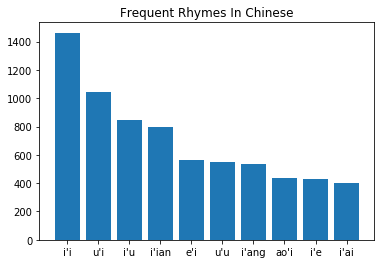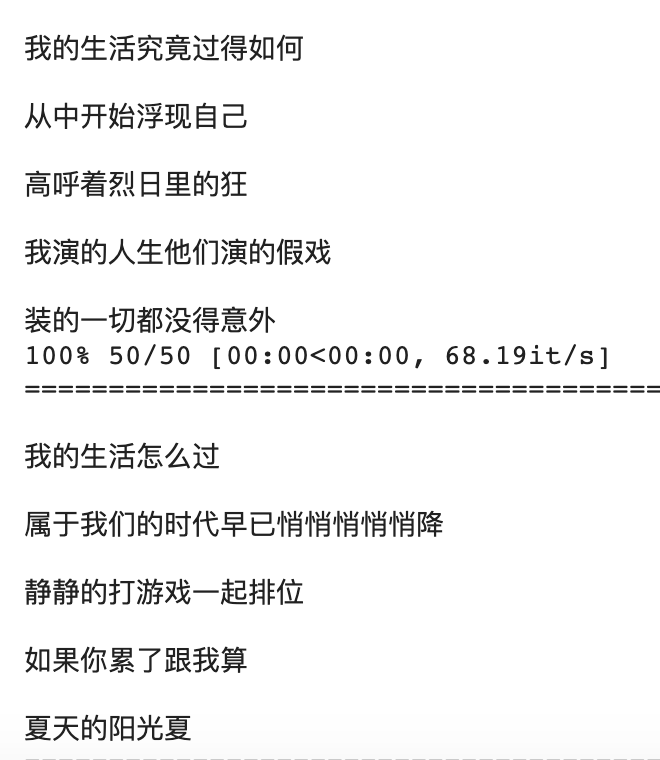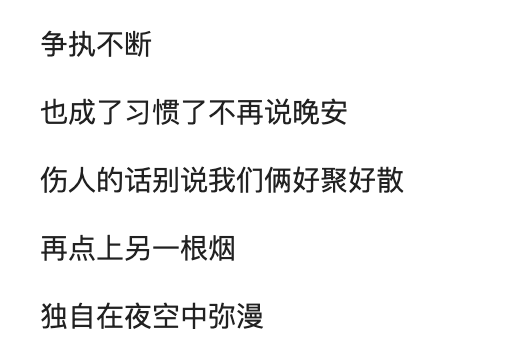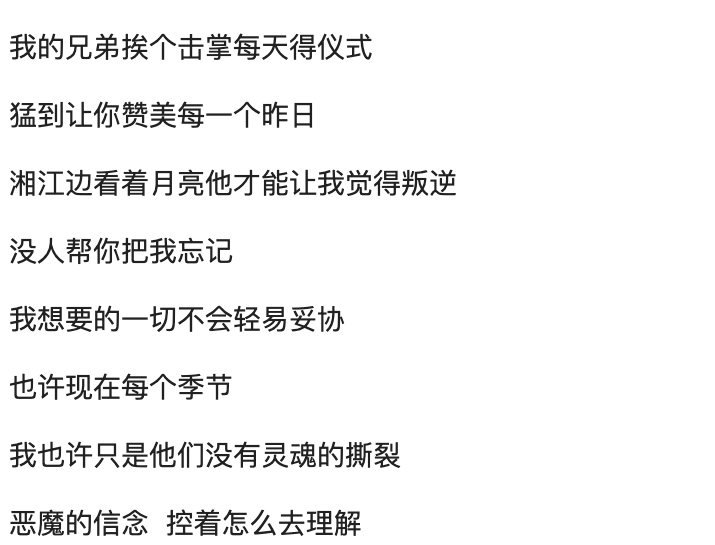In this repo, we got a gap generator with GPT2-Chinese. This generator is a retrained version of GPT-Chinese based on 51426 chinese rap lyrics from 2750 songs.
The dataset was scrapped from Xiami because they have a specific genre called "Chinese hip-pop" which means we don't have to put a lot of effort on classifying songs. If you want to see how the scrapper works, you could find it in preprocessing/xiami_scrawl_rap_lyrics.ipynb. In that notebook, I also did some exploratory analysis about chinese rap lyrics.
- Word Frequency
Based on the result, we could see that a lot of chinese rappers are focusing on "自己","我们","生活". Ummmm, seems positive? This surprised me a little bit. After all, in my mind, I thought most of rap lyrics are aggressive (I know, it's kinda of stereotype). Anyhow, data always tells us the truth.
- Rhyme Frequency
Rhyme/flow definitely is the most important part of rap. We could see that double i should be the most frequent rhymes used in chinese rap lyrics, such as "世纪", "自己 ".
As I stated before, the repo retrained GPT2-Chinese model. Architecture and the general training process followed that repo's instruction. Since rap lyrics datset is small and the length of lyric is short, I changed some parameters of training to make the model fit our task. The command I used in training is:
!python ./train.py --raw --min_length=5 --epoch=30 --num_pieces=1 --stride=10 --batch_size=500 --lr=0.001 --log_step=10And I also changed n_ctx and n_positions to be 12 because the original gpt2-chinese repo split the dataset into pieces to train. These parameters play an important role in training.
My final model and specific configuration could be found in model/final_model/. The loss of training process is shown as below:
The final model is too large to be unploaded in Github, so you could download it here.
Here, in order to generate rap with rhyme, I revised the original generate.py in GPT2-Chinese. In my script, I used the rollback scheme to rhyme the generated lyrics. That is to say, if the last word of one sentence does not follow the rhyme pattern user input, the generator would roll back to the last sentence and then regenerate a new line.
And what's more, my gernerator supports two modes, lucky mode and unlucky mode. How to use them?
-
Lucky model = 'I do not care about rhyme. Just give me something!'
!python ./generate.py --length=50 --nsamples=1 --prefix='争执不断' --lucky_mode
Here, length is the total length of generated text.
-
Unlucky mode = 'I could not accept the rap lyrics without rhyme!'
!python ./generate.py --length=7 --nsamples=1 --prefix='争执不断' --rhyme_pattern='ABABCCC'
Here, length is the length of generated sentence. rhyme_pattern is the pattern you want.
Yayyyyyy! We finally got here! Let's see how the model performs!
Is it amazing? It really surprised me somehow!
Again, a lot of codes in this repo are borrowed heavily from GPT2-Chinese. If you want to know more about GPT2-Chinese, I strongly recommend that you should read the original code in that repo. And a big THANK YOU to google colab for their free GPU support! All of my training, preprocessing and scrapping processes were done on colab. It's really amazing! One thing needed to state, the idea of rhyme scheme was inspired by Tong-Music. This author also did a lot of works on lyrics generation, if you're interested, please don't be hesitated to check it!
Now this is just an alpha version of this repo. Next, I would like to:
Make it browser-interactive(Check in here)- Keep improving the performance of the model





